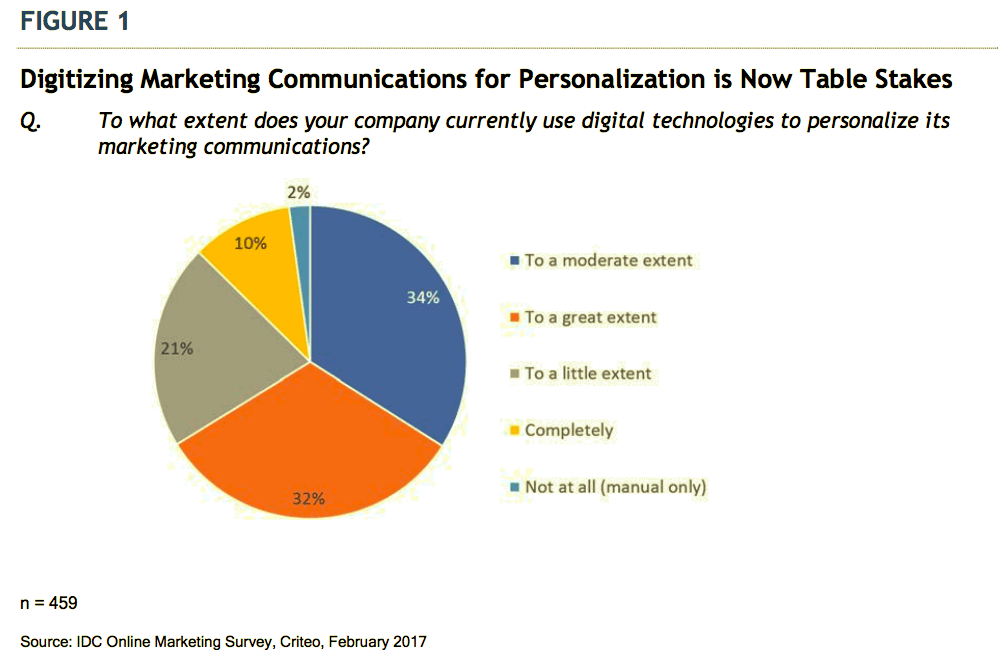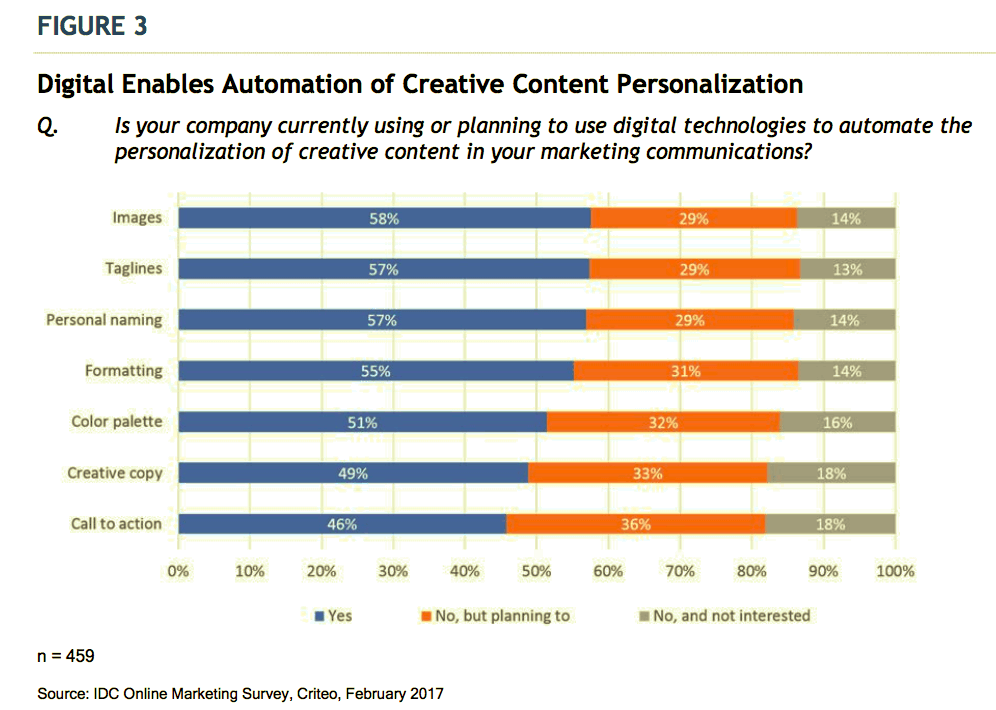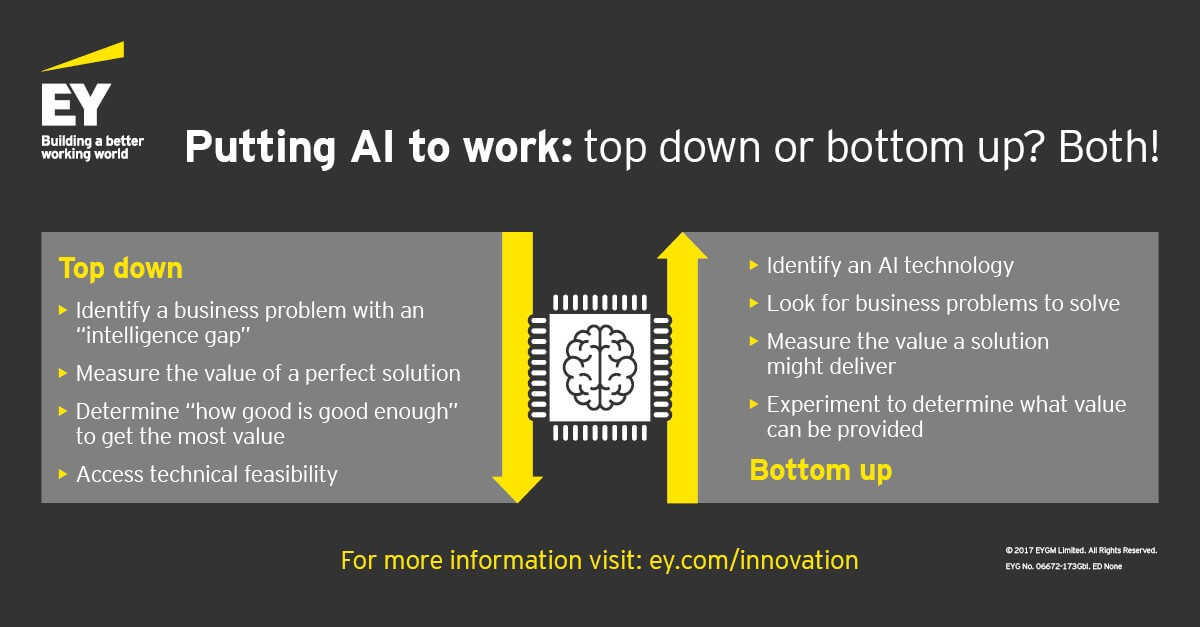Finding synergy between talent & technology in the martech machine age
What can artificial intelligence bring to your marketing organization, and how can you best utilize this increasingly ubiquitous technology? Columnist Andy Betts shares 5 benefits.
We’re entering what many call the machine age, as the proliferation of AI and machine learning applications is making such technologies commonplace. It’s a world in which augmented reality (AR) abounds and virtual reality (VR) blurs the lines between the physical and digital realms, but it’s not the far-out dystopian nightmare we were raised to fear.
Sure, there’s discord in places where technology and humans are still out of sync and haven’t quite learned how to jell. Where we’re headed, though, is toward an exciting, and ultimately more rewarding, symbiotic relationship between humans and our machines.
Marketing, in particular, holds great promise, as a great variety of specialists are needed to program and train technology and interpret outputs. Creativity and judgment, two inherently human traits, are needed to help our machines achieve their full potential.
Today, the smart players of martech are utilizing the combination of talent and technology to drive exceptional results across a greater volume of platforms, networks and touch points than ever before. As a slate of hybrid marketers emerges and the synergy between human and machine builds, we’re seeing excellent outcomes for those organizations that capitalize on the opportunity.

Click to enlarge. Source: Deloitte
Is it worth shifting your focus here yet? You be the judge. Here are just a few of the outcomes of prioritizing the relationship between your talent and your technology.
1. You’ll understand customers better than ever before
As much as advertising has evolved, consumers are still a step ahead, and they aren’t yet satisfied. A 2017 study conducted by Qualtrics for Rakuten Marketing found that 83 percent of consumers polled still find advertising to be interruptive, since they don’t feel understood and consequently don’t believe a brand is genuine.
AI-enabled martech collects and learns from customer signals, interactions and transactions, gathering and analyzing a greater volume of data than any human team could ever hope to dig through.
2. You can scale the enhancement of customer experiences
Today’s tools and platforms aren’t only providing superior insights, though. Sophisticated algorithms seek out opportunities to adapt and modify experiences in real time to suit individual preferences, delighting customers by solving problems they may not have even expressed.
Take German airline Lufthansa’s AI-enabled data mining, which it uses to tailor its app experience. The company’s algorithms are constantly scanning traveler data in search of opportunities to improve the customer experience with enhanced offers.
Imagine experiencing a flight delay and touching down in a foreign city tired, weary and out of sorts. As you turn on your phone, a push notification from your airline offers lounge access and provides GPS directions right to the lounge. A layer of personalization allows customers to “teach” the machine about their individual wants and needs through interactions, even if those touch points include rejections of the offer.
CMOs have consistently pegged consumer experience and attribution as top concerns, and 72 percent of businesses polled by Forrester in 2016 said that improving customer experience was their top priority. Yet only 63 percent of marketers prioritized implementing technology investments that would help them reach this goal.
It’s no surprise then that 2017 marked the first time not one single industry improved the quality of its customer experience from the previous year, as Forrester found in its annual consumer survey. In fact, three verticals actually got worse. Twice as many brand scores fell as those that rose, and losses were on average bigger than gains. It’s pretty abysmal that not a single brand made the “Excellent” category.
As Signal CEO Mike Sands wrote in his recent Martech Today column:
[blockquote]“Customer service issues, email glitches, defective products, website functionality — these are all critical parts of the customer experience. Integrating all customer data into a proprietary identity asset that the entire organization can access gives brands the insights needed to drive better end-to-end customer experiences.” [/blockquote]
There’s simply no way to achieve this without your talent and technology working together.
3. You’ll be able to personalize for all parts of the customer journey
Sixty-six percent of marketing executives surveyed recently by IDC on behalf of Criteo are using personalization technologies to a moderate or great extent, but 23 percent said they used personalization “not at all” or “to a little extent.”

In “Can Machines Be Creative?” the organization examined the adoption of and potential uses for new machine learning technologies in brands’ online advertising operations, within the marketers’ goal of creating more relevant and positive personalized customer experiences.
Interestingly, they found that most personalization is happening in the evaluation and purchase stages of the customer journey and that images, taglines and names were the most commonly personalized elements in marketing communications.

These are still fairly primitive examples of personalization, especially given what AI-enabled machines are capable of today. So, although a great proportion of marketers may feel as though they’re using the technology, we can see that it’s still far from being used up to its potential yet.
Both personalization at scale and the personalization of experiences, rather than the insertion of a few personalized elements in communications, require the analysis of massive amounts of data. True personalization at scale requires that machines be able to identify opportunities to answer a personal need, rather than simply matching a name or other static piece of information to a user identity. This needs to happen across all stages of the customer journey, as well, right on through to loyalty, where programs that make customers feel special and recognized have 2.7 times more satisfied members, according to Bond Brand Loyalty.
Hybrid marketers are needed more than ever to apply their creative skills to campaigns that optimize experiences because, according to a Gartner prediction from a few years ago, more than 50 percent of companies will redirect investments toward customer experience innovations this year.
Across marketing, sales and customer service, brands have myriad opportunities to delight hyperconnected customers so they feel deeply valued and appreciated — but only through the power of both technology and talent.
4. Your brand will make better decisions faster
Gartner in 2011 predicted that by 2020, customers would manage 85 percent of their relationships with enterprises without interacting with a single human. How can you become proactive in these interactions and in creating great experiences? Humans will simply never be able to comb through that much data, let alone with the precision of a well-designed algorithm.
Marketers need machine learning to find actionable insights to help solve every type of business problem, from lowering CPA to increasing LTV, reducing churn and more.
MarTech Today reporter Robin Kurzer recently shared a few specific use cases on how different types of businesses are putting the customer experience first with martech. She described how Twiddy & Co., a 40-year old vacation rental company in North Carolina, adopted a number of web and workforce optimization tools, as well as automated communications software to improve business operations and better engage customers.
Chief Administrative Officer Clark Twiddy told Kurzer, “We just kept throwing more people at unresolved root causes and hit the point where the results weren’t moving the needle and financial drain was limiting our ability to invest in other areas. We had to seek out smarter systems and get faster insights at lower costs.”
Streamlining your marketing operations, in particular, is vital in bridging the gap between consumers’ expectations and the experience your brand delivers. (I previously shared a few different management models you can use to incorporate technology successfully and get the most out of the tools at your disposal, and others also have written about martech enablement in these virtual pages.)
5. You’ll scale operations and create new jobs
Martech empowers the humans in marketing to do better, act faster and accomplish more. As Daniela Rus, director of MIT’s Computer Science and Artificial Intelligence Lab (CSAIL), succinctly put it at a November event at the university: “I am wildly excited about offloading my routine tasks to machines so I can focus on things that are interesting.”

As we increasingly turn to machines to help solve persistent, complex business problems, our greatest challenge now is developing an AI mindset. More than 10,000 AI-related jobs have opened up across the country. It’s kicked off a sudden talent race that has 56 percent of senior AI professionals polled recently by Ernst & Young pointing to a lack of talent and qualified workers as the greatest single barrier to the implementation of AI across business operations.
Critical thinking, data-centricity, and a rare combination of both left- and right-brain mastery are key to developing the mindset for success through the rise of martech. Look for these skills as you bring new talent into your organization.
These outcomes are already happening across companies that have been forward-thinking in empowering their people with technology. The symbiosis between creative, analytical teams and powerful AI-enabled machines is where our greatest martech opportunities lie.
Contributing authors are invited to create content for MarTech and are chosen for their expertise and contribution to the martech community. Our contributors work under the oversight of the editorial staff and contributions are checked for quality and relevance to our readers. MarTech is owned by Semrush. Contributor was not asked to make any direct or indirect mentions of Semrush. The opinions they express are their own.
Related stories